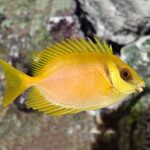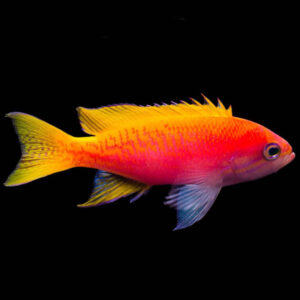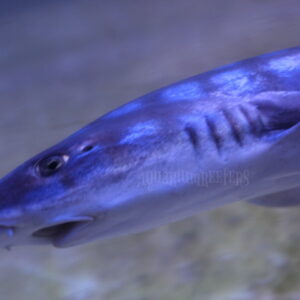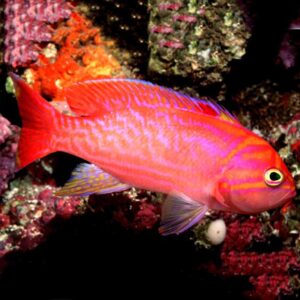Description
The Marcella Butterfly, belonging to the Acanthuridae family, shares characteristics with other ray-finned fish such as Sawtails and Surgeonfish. One defining trait of this family is the presence of scalpels or spines on both sides of the caudal peduncle, serving as a defensive mechanism. These spines are often brightly colored, acting as a deterrent. Blonde Lipstick Tangs are known for their vibrant orange spines, which exemplify this trait.
Within the Acanthuridae family, Blonde Lipstick Tangs are categorized under the subfamily Nasinae. This subgroup comprises exclusively members of the genus Naso. These fish possess up to two forward-hooked spines on each side of their caudal peduncle, with the number varying depending on the fish’s age. Similar to Sawtails, keels develop as the fish matures, with the potential for up to seven keels. Notably, the retractable spines found in the Acanthurinae Subfamily are absent in these species. Instead, these butterflyfish have a fixed pair of spines that they can erect by curving their tail.
Originating from the Western Atlantic, ranging from New England to Brazil, the Marcella Butterfly is often found in reef flats and coastal areas. As with other tangs, these butterflyfish play a role in controlling algae growth on reefs, preventing algae from outcompeting slower-growing coral species for vital light and space. This contribution is especially vital in shallower reefs that receive ample sunlight.
In an aquarium setting, replicating their natural habitat is essential. Providing plenty of hiding spots and crevices helps the Marcella Butterfly establish its territory. Options like Aquaroche and Aquaroche shelves can be beneficial for this purpose. To prevent any potential losses, hobbyists are advised to use a jump guard.
The Marcella Butterflyfish thrives on a diverse diet that includes high-quality pellets and flake foods, such as Jbl Maris. Offering ocean nutrition seaweed that can be secured to the tank’s side with clips is also recommended. Enriched frozen foods like mysis shrimp, brine shrimp, and krill, supplemented with seachem garlic guard and Atvitol vitamins, are crucial for maintaining their health. These additives support their immune system and help prevent ailments. Additionally, these butterflyfish consume live foods like copepods and amphipods, which can be cultivated in an attached refugium.
Whether kept individually or in groups, Marcella Butterflyfish can thrive in aquariums. Introducing multiple tangs is also possible, but seeking advice, especially if uncertainties arise, is recommended.
Please note that representative images of the fish provided are for illustrative purposes, and variations in pattern, coloration, and shape may exist in the received livestock.









Reviews
There are no reviews yet.